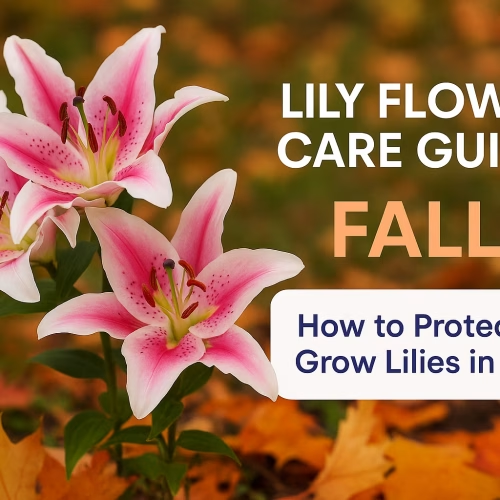I’ve been growing lilies for over a decade, and I’ve learned that what you do in autumn makes all the difference between lackluster blooms and show-stopping displays. Many gardeners make the mistake of neglecting their lilies once the flowers fade, but that’s exactly when these gorgeous plants need your attention most.
In this comprehensive lily flower care guide, I’ll walk you through everything you need to know about protecting and growing lilies during the fall season. Whether you’re a seasoned gardener or just starting out, these proven strategies will help you cultivate healthy, vibrant lilies that will reward you with stunning blooms year after year.
Table of Contents
Key Takeaways
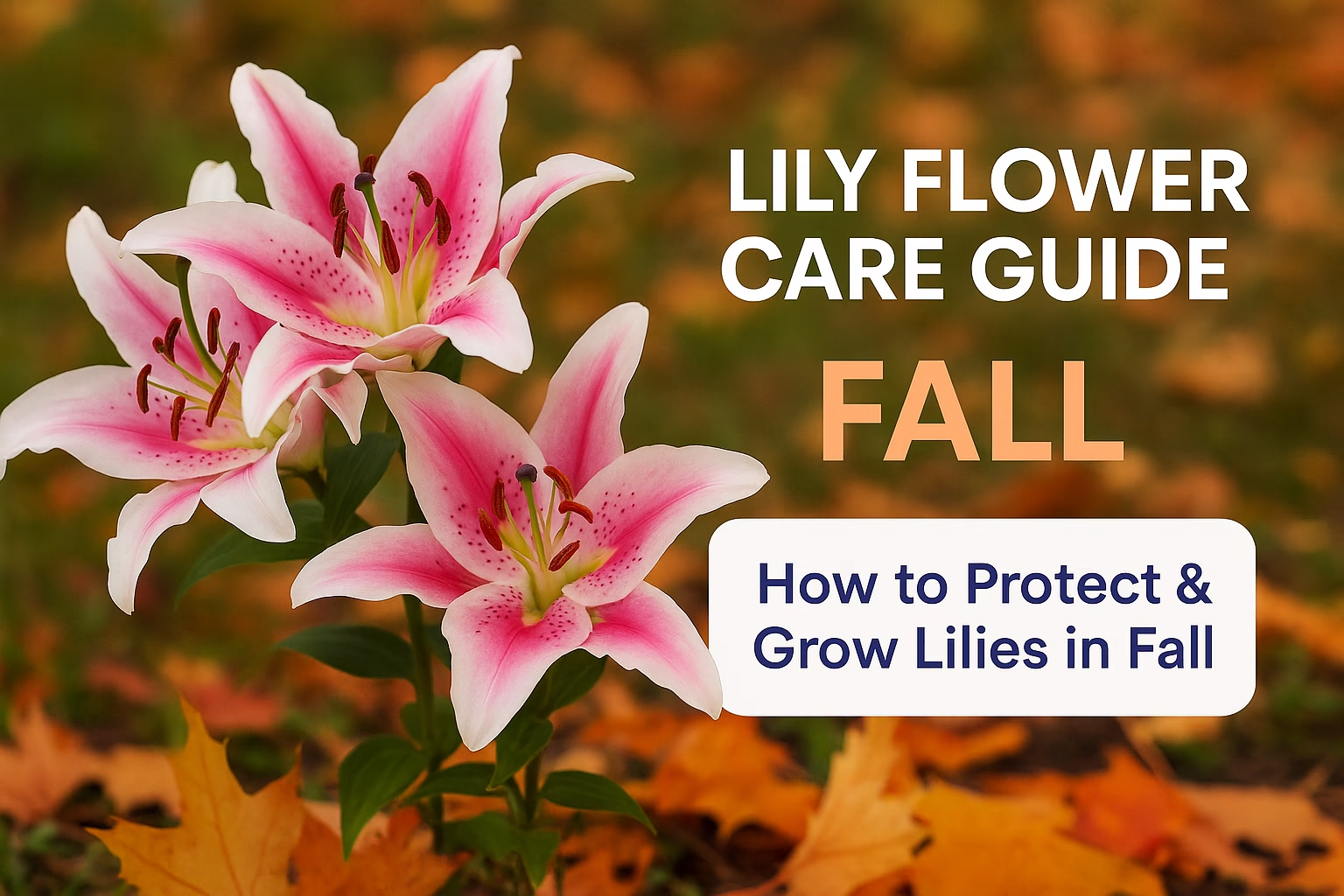
Understanding Lily Life Cycles and Fall Preparation
Before diving into specific care techniques, it’s important to understand what’s happening beneath the soil during fall. After your lilies finish blooming in summer, they don’t just go dormant—they’re actually working hard to store energy for next year’s growth.
During autumn, lily bulbs are replenishing their nutrient reserves and developing new root systems. This is why fall care is so critical. Any mistakes during this period can compromise your lilies’ ability to survive winter and produce those gorgeous blooms you’re hoping for.
Why Fall Care Is Different
Unlike spring and summer maintenance, fall lily care focuses on:
Think of it as tucking your lilies in for a long winter’s nap—you want them cozy, protected, and ready to wake up refreshed when spring arrives.
1. Watering Your Lilies Properly in Fall
One of the biggest mistakes I see gardeners make is continuing their summer watering schedule well into fall. As temperatures drop and rainfall increases, your lilies need significantly less water.
The Fall Watering Strategy
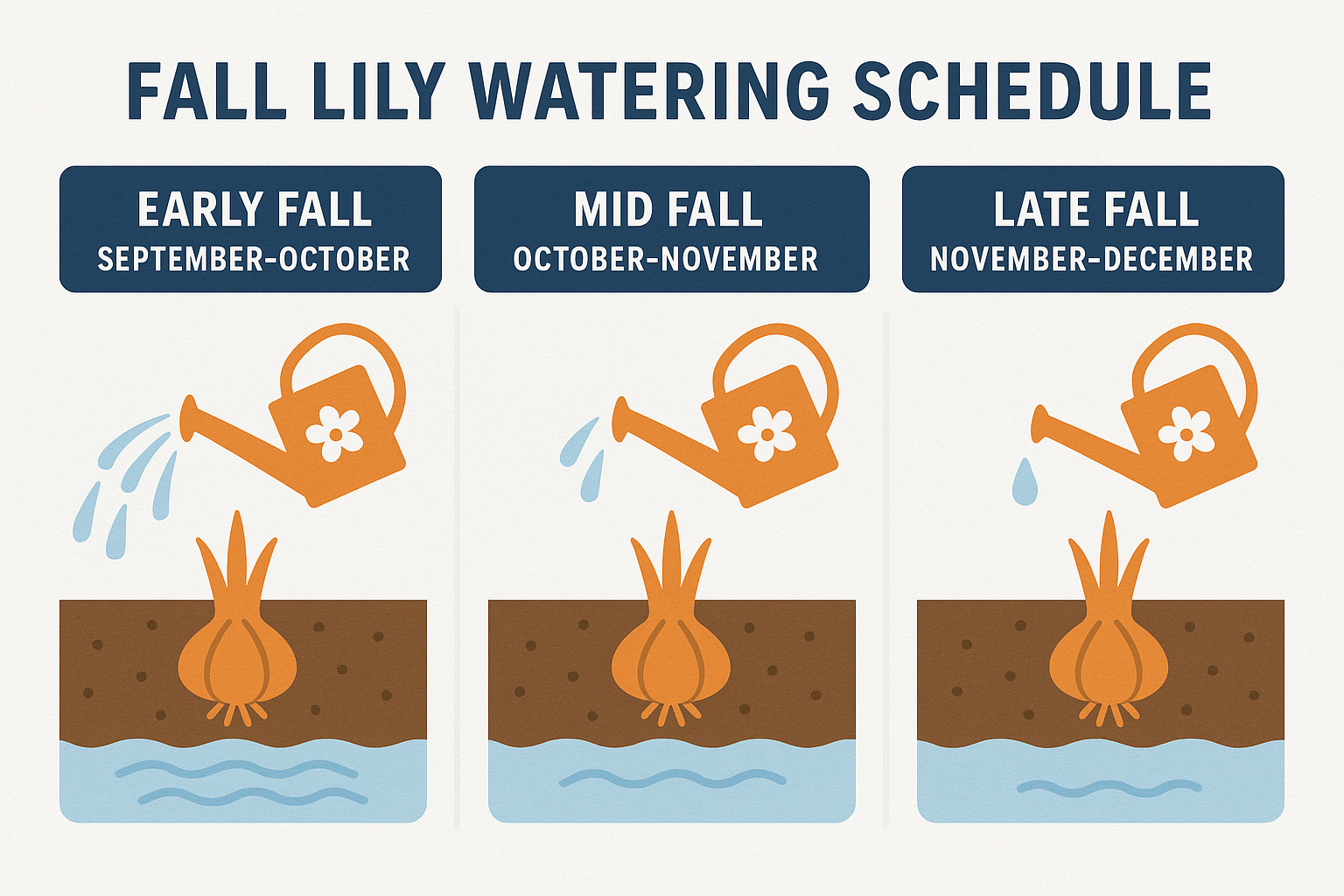
Early Fall (September-October):
Late Fall (November onward):
Signs of Overwatering in Fall
Watch for these warning signs:
Pro Tip: “I always stick my finger deep into the soil before watering in fall. If it feels even slightly moist, I skip watering that week. Lilies are much more tolerant of dry conditions than soggy ones during this season.”
2. Pruning and Deadheading: What to Cut and When
Knowing when and how to prune your lilies in fall can feel confusing, but it’s actually quite straightforward once you understand the basic principles.
The Golden Rule of Lily Pruning
Never cut back green foliage! Those leaves are still photosynthesizing and sending energy down to the bulb. Removing them prematurely is like unplugging your lilies’ battery charger.
Step-by-Step Fall Pruning Guide
What About Seed Pods?
If you notice seed pods forming after flowers fade, remove them! Seed production drains valuable energy from the bulb that should be stored for next year’s growth. Unless you’re specifically trying to propagate new lilies from seed (which takes years), snip those pods off.
Similar to how you’d care for other fall bloomers, proper pruning techniques are essential. If you’re working on your fall garden preparation, these same principles apply across many plant varieties.
3. Fertilizing Lilies for Optimal Fall Health
Fall fertilization is a delicate balance. You want to support bulb development without encouraging new top growth that could be damaged by frost.
The Best Fertilizer for Fall Lilies
I recommend a low-nitrogen, high-phosphorus fertilizer with an NPK ratio around 5-10-10. Phosphorus supports root and bulb development, which is exactly what you want in autumn.
Fall Fertilizing Schedule
| Timing | Fertilizer Type | Application Method |
|——–|—————-|——————-|
| Early September | Bone meal or bulb fertilizer | Work into soil around plants |
| Mid-September | Liquid phosphorus supplement | Dilute and water in |
| Late September | Compost tea | Apply as soil drench |
| October onward | STOP fertilizing | Let plants go dormant naturally |
What NOT to Do
The key is to stop all fertilization at least 6 weeks before your first expected frost date. This allows plants to naturally slow down and prepare for dormancy.
4. Mulching for Winter Protection
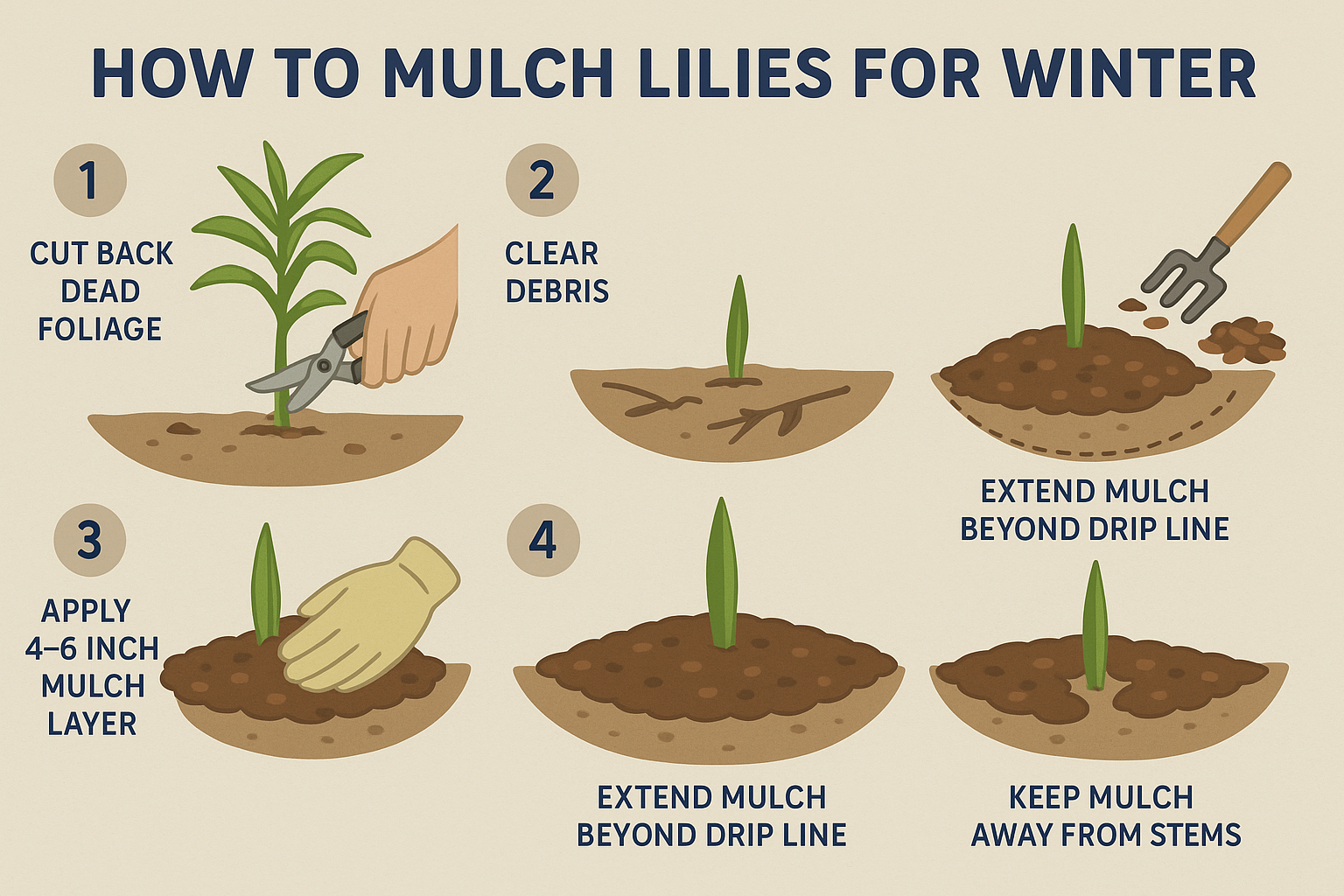
If I had to choose just one fall care task that makes the biggest difference, it would be mulching. A proper mulch layer protects your lily bulbs from temperature fluctuations, frost heaving, and excessive moisture.
Choosing the Right Mulch Material
The best mulching materials for lilies include:
How to Mulch Lilies Properly
Regional Mulching Variations
Cold climates (Zones 3-5): Use 6-8 inches of mulch and consider adding evergreen boughs on top for extra insulation
Moderate climates (Zones 6-7): Standard 4-6 inches is perfect
Warm climates (Zones 8-10): Use 2-3 inches primarily for moisture retention and weed suppression
Just as you would protect other fall plantings, proper mulching creates a protective barrier. This technique works beautifully alongside other fall garden crops you might be tending.
5. Dividing and Transplanting Lily Bulbs
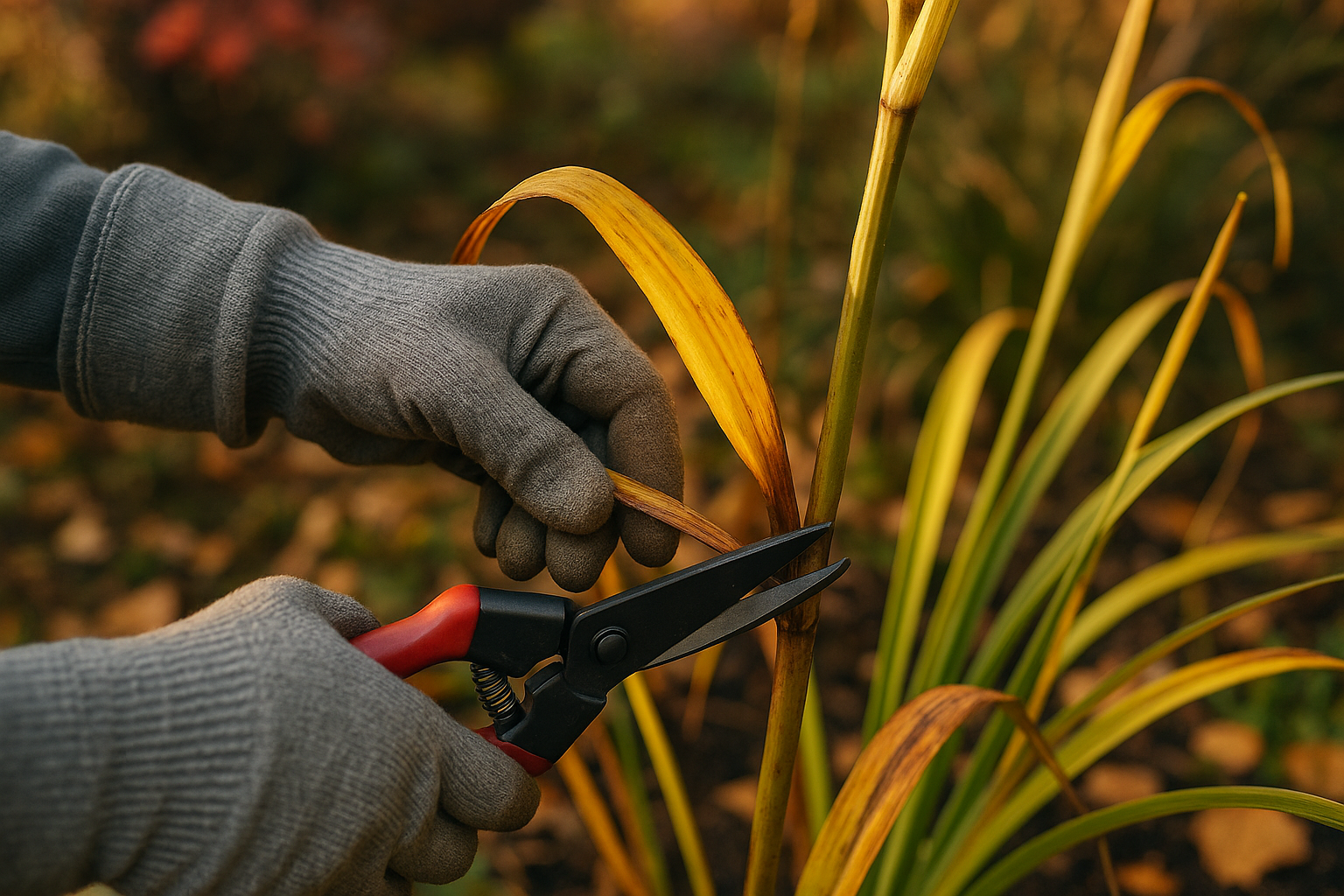
Fall is actually the ideal time to divide overcrowded lily bulbs. Every 3-4 years, lilies benefit from division to maintain vigor and bloom quality.
Signs Your Lilies Need Dividing
How to Divide Lilies in Fall
Best Timing: 4-6 weeks after blooming, before the first hard frost
Step-by-Step Process:
Bulb Storage Option
If you can’t replant immediately:
6. Pest and Disease Prevention in Fall
Cooler, damper fall weather creates ideal conditions for certain lily pests and diseases. Prevention is much easier than treatment, so stay vigilant!
Common Fall Lily Problems
Botrytis Blight (Gray Mold):
Lily Beetles:
Bulb Rot:
Fall Disease Prevention Checklist
✅ Remove and destroy all diseased plant material (don’t compost it!)
✅ Clean up fallen leaves and debris around plants
✅ Ensure good air circulation between plants
✅ Avoid working with plants when foliage is wet
✅ Inspect bulbs during division for soft spots or discoloration
✅ Apply organic fungicide if you’ve had issues in previous years
Important Note: “I learned the hard way that leaving diseased foliage around my lilies over winter just guarantees the same problems next year. Now I’m ruthless about fall cleanup, and my lilies have never been healthier.”
7. Preparing Lily Beds and Soil for Winter
The soil around your lilies needs just as much attention as the plants themselves. Fall is the perfect time to improve soil conditions for next year’s growing season.
Soil Amendment Strategy
Early Fall Tasks:
Late Fall Tasks:
Drainage Improvements
Poor drainage is the number one killer of lily bulbs over winter. If you notice standing water in your lily beds:
For those working with raised bed gardens in fall, these same soil preparation principles will serve you well across all your plantings.
8. Container Lily Care for Fall 🪴
Growing lilies in containers requires special fall care since pots don’t provide the same insulation as in-ground planting.
Container Lily Fall Options
Option 1: Overwinter Containers Outdoors
Option 2: Store in Unheated Garage/Shed
Option 3: Plant Bulbs in Ground
Container Care Timeline
| Month | Action |
|——-|——–|
| September | Reduce watering, stop fertilizing |
| October | Allow foliage to die back naturally |
| November | Cut back dead foliage, add mulch or move to protection |
| December-February | Check monthly, minimal water if needed |
| March | Move containers back outdoors, resume watering |
If you’re interested in container gardening techniques, you might also enjoy learning about growing cherry blossoms in pots, which shares similar principles.
9. Planning for Next Year’s Lily Display
Fall isn’t just about protecting existing lilies—it’s also the perfect time to plan and plant for an even better display next year!
Adding New Lily Bulbs in Fall
Why Plant Lilies in Fall?
Fall Planting Guidelines
Timing: Plant 4-6 weeks before ground freezes (typically September-October)
Depth:
Spacing:
Creating a Succession Bloom Plan
Plant different lily varieties for continuous blooms:
This strategy ensures you have beautiful lily blooms from early summer through early fall! If you’re planning your overall fall garden, check out these beautiful fall flowers to plant alongside your lilies.
10. Regional Fall Care Considerations
Your specific climate zone dramatically affects how you should care for lilies in fall. Let’s break down regional strategies.
Cold Climate Lily Care (Zones 3-5)
Challenges: Early frosts, frozen ground, extreme temperature swings
Special Strategies:
Moderate Climate Care (Zones 6-7)
Challenges: Unpredictable frost dates, variable rainfall
Special Strategies:
Warm Climate Care (Zones 8-10)
Challenges: Insufficient winter chill, mild temperatures, potential for rot
Special Strategies:
Coastal Climate Considerations
Coastal gardeners face unique challenges:
11. Troubleshooting Common Fall Lily Problems
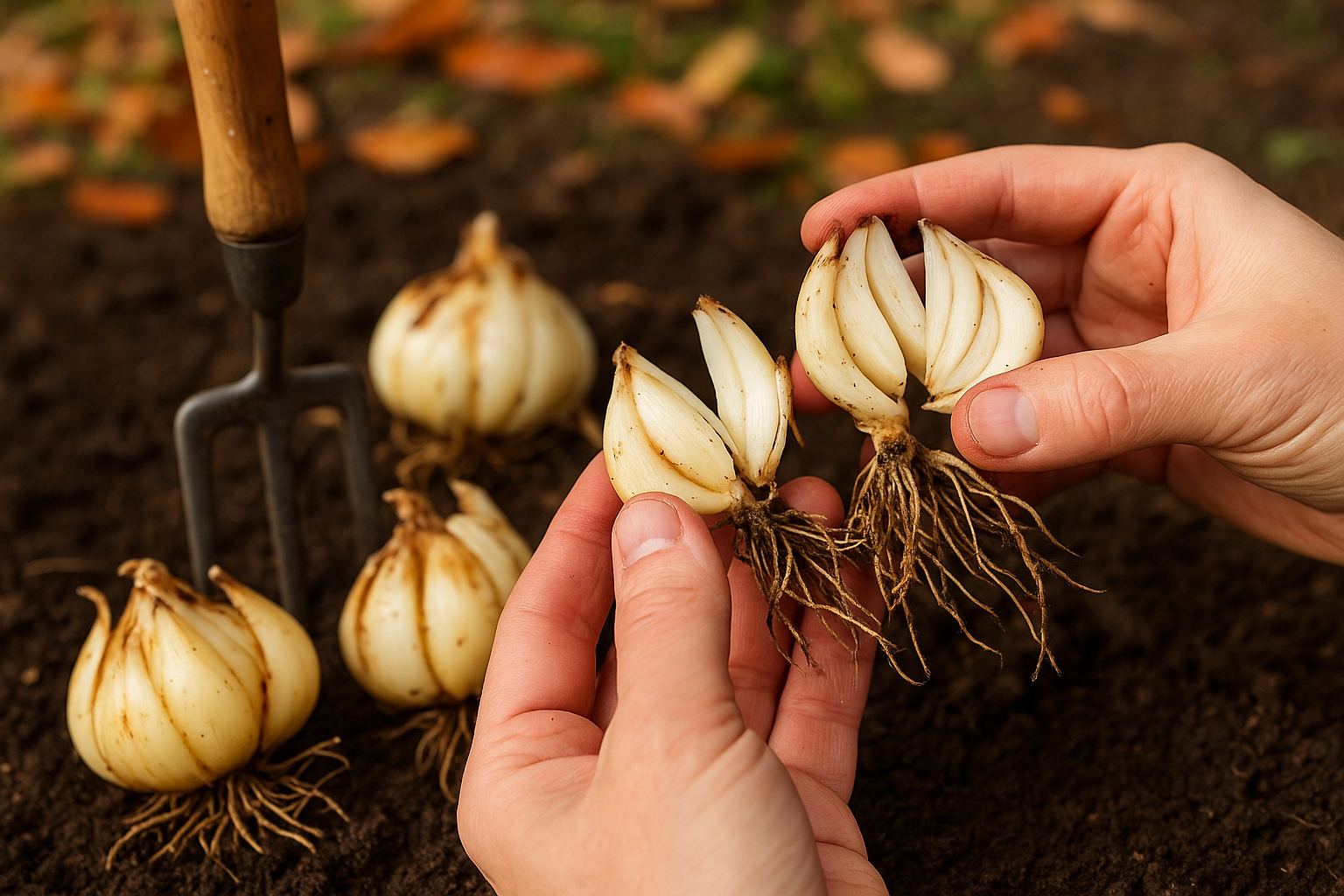
Even with the best care, problems can arise. Here’s how to identify and solve common fall lily issues.
Problem: Foliage Dying Back Too Early
Possible Causes:
Solutions:
Problem: Bulbs Feel Soft or Mushy
Possible Causes:
Solutions:
Problem: No Blooms Expected Next Year
Possible Causes:
Solutions:
Problem: Yellowing Leaves with Green Veins
Possible Causes:
Solutions:
Water Conservation
Smart Watering Practices:
Companion Planting for Lily Health
Plant these companions near lilies for mutual benefits:
For more eco-friendly gardening approaches, you might find helpful tips in this guide on beginner gardening.
Creating a Fall Lily Care Calendar
To help you stay organized, here’s a month-by-month fall lily care calendar you can follow:
September
October
November
December-February
Bringing It All Together: Your Lily Flower Care Guide Success Plan
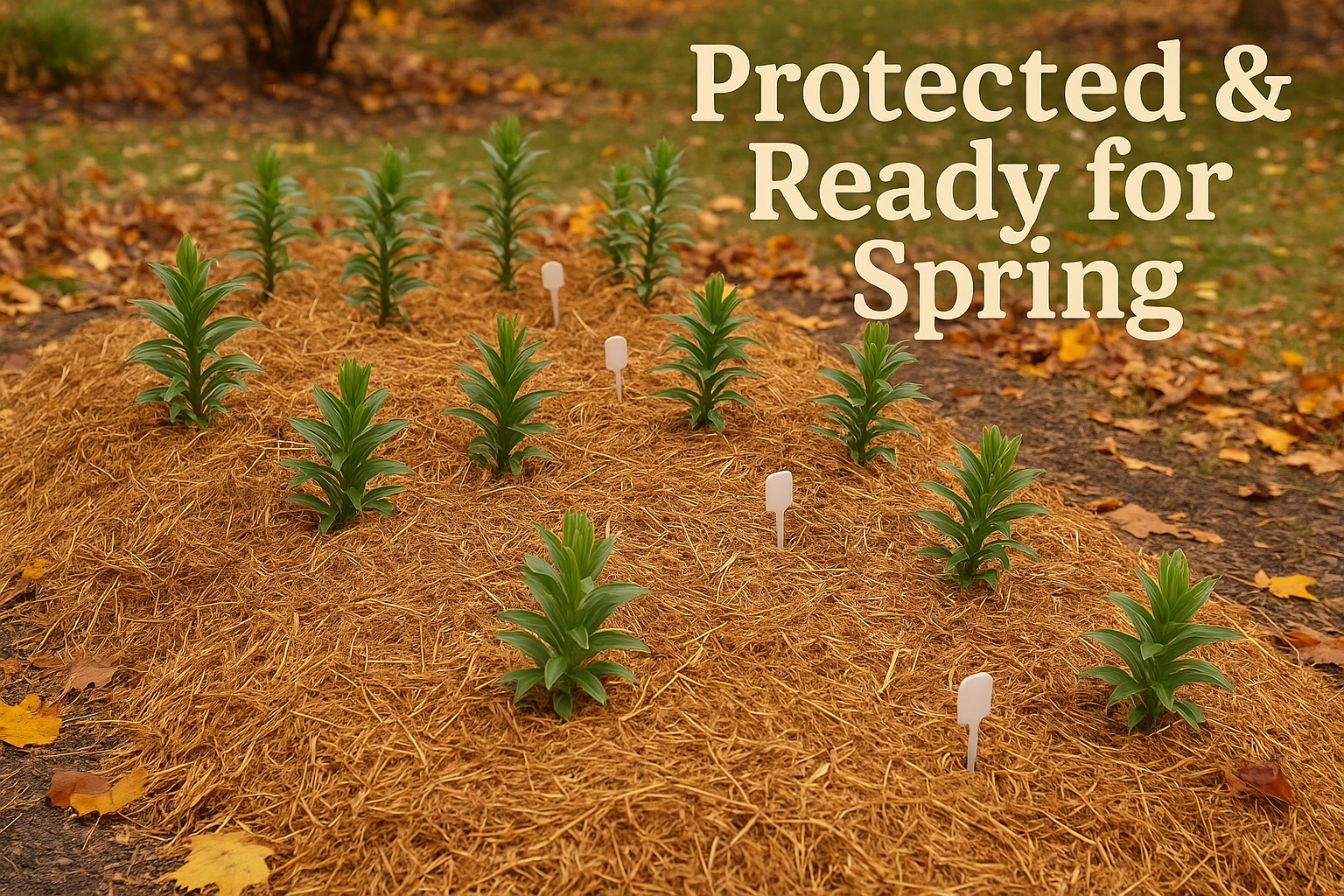
Caring for lilies in fall doesn’t have to be complicated. When you break it down into manageable tasks and understand the “why” behind each step, it becomes second nature.
The most important things to remember from this lily flower care guide:
I encourage you to start implementing these practices this fall. You don’t have to do everything perfectly—even small improvements in your lily care routine will yield noticeable results next growing season.
Conclusion
Growing beautiful, healthy lilies year after year is absolutely achievable when you give them the fall care they deserve. By following this comprehensive lily flower care guide, you’re setting your plants up for success through winter and into the next blooming season.
Remember, every garden is unique, and you’ll develop your own rhythms and techniques as you gain experience. Don’t be afraid to experiment, observe how your lilies respond, and adjust your approach accordingly.
If you’re looking to expand your gardening knowledge beyond lilies, explore more seasonal care guides like planting cherry blossom trees in fall or discover tulip care tips to round out your flower garden expertise.
Your lilies are counting on you this fall, and with this guide in hand, you’re well-equipped to give them exactly what they need. Here’s to stunning lily blooms next summer!



